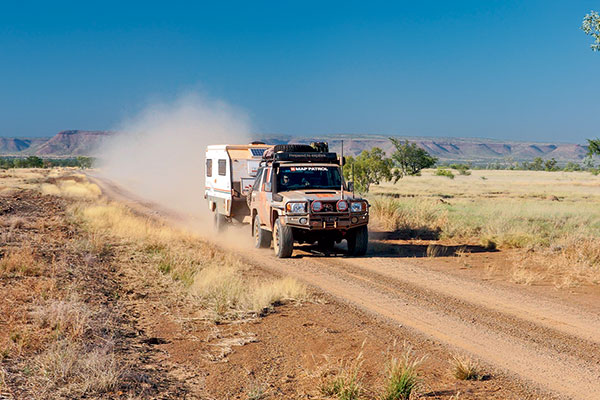Currently there are six one-tonne utes on the market supposedly capable of towing 3500kg, if you believe the figures sprouted by the car manufacturers – the Mazda BT-50, the great selling Ford Ranger, the Isuzu D-MAX, the Holden Colorado, Nissan Navara and, of course, the latest Toyota HiLux. The Mitsubishi Triton is rated at 3100kg while the VW Amarok comes in at a still healthy and maybe only slightly-exaggerated, 3000kg.
It’s all a bit of marketing hype, I reckon.
In the small print of the manufacturers’ handbooks you’ll find less publicised figures for gross vehicle mass (GVM), which is the maximum allowable weight of the vehicle fully loaded, and gross combined mass (GCM), which is the combined total weight of the vehicle and any trailer it is towing.




For example, the Ford Ranger dual-cab weighs in at 2200kg with an impressive stated 1000kg payload capacity. Even that figure is overrated I reckon, ’cause without doing something to the suspension, you’ll be really dragging the bum if you have the vehicle at its maximum GVM of 3200kg... but plenty of people do!
The rated tow figure of the Ranger is 3500kg while the GCM is 6000kg – much the same as many of the dual cabs – which means the maximum car weight has now dropped to 2500kg. A payload decrease of 700kg! That means the maximum weight you can carry in a Ford towing a 3500kg caravan is just 300kg in the vehicle itself – not much more than two healthy adults, a pet dog and a full tank of fuel!
Some other common dual-cab utes are even worse. So you can bet your last dollar that there are very few rigs towing a heavy van that would be legal, given those figures. And while legality may be an issue, it is the safety issues that are paramount for yourself and for other road users, I reckon.
Now you can go and get a suspension upgrade from a number of 4WD aftermarket companies for many of the popular dual-cab utes and even go for a GVM upgrade (not available for all utes); I’d strongly suggest this is the absolute minimum you should do – even when just loading the family on board and towing a camper trailer!
Some of the vans we saw going up the highway on our last trip were loaded badly, with more than the recommended 10 per cent of the weight of the trailer on the tow ball. That accentuates the problems with the tow vehicle being down at the bum with the front of the tow tug pointing skywards.
Such a weight discrepancy means you can also easily get into a situation where the tail ‘wags the dog’ upsetting the balance of the ute and badly influencing steering and braking.
Dual-cab utes are popular because they can be so many things to so many different people. Towing big heavy vans more than 2500kg (loaded), though, is not one of them, as far as this writer is concerned. Sticking to a camper trailer or a small van weighing in at less than 2000kg and getting a suspension upgrade would be a great start to a holiday.
If you need to tow one of the bigger, heavier vans, get a 200 Series Cruiser at the bare minimum; better still, get it behind a Dodge Ram, or a Ford F250. You’ll not only appreciate the effortlessness of such a tow vehicle, you’ll be legal and you and every road user near you will be a lot safer!




